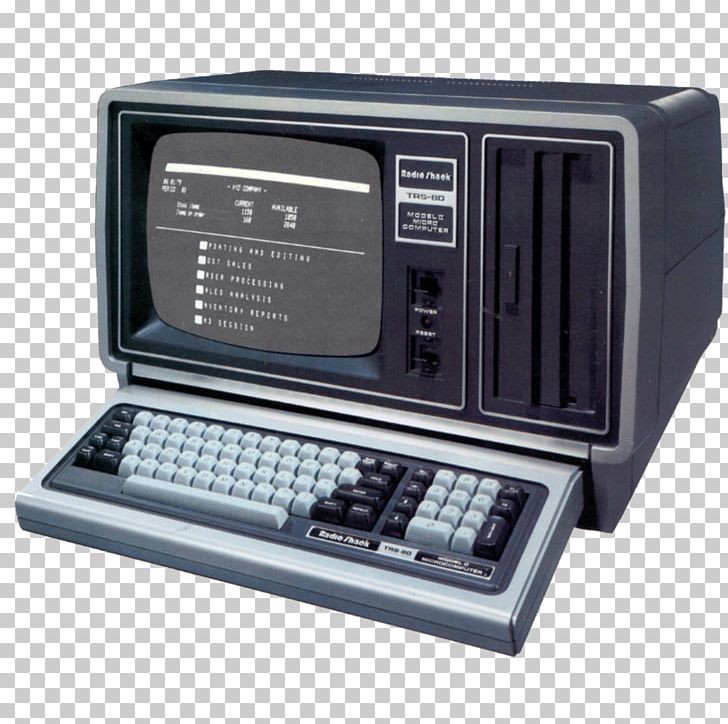Time Requires Successor
In late 1978, Tandy started working on a second model of the TRS-80, citing the first model was "too limited" for business use,
despite most people purchasing it for business purposes. Midway through the next year, Tandy showcased the TRS-80 Model II at
National Computer Conference in New York City, advertising it as strictly a small business computer. This model was quite a
departure from the first, in that the monitor and floppy drive both come in one piece. There's no motherboard inside--just a bunch
of circuit boards with all the logic on them. Despite that, it isn't portable. Radio Shack mentioned that the Model II was not meant
to replace the original, adding that you can't trade the old in for the new, not even for credit. A 32 KB one-drive version of the
machine was released with a price of $3,450, a 64 KB version was $449 more, and a four-drive version (!) came with a $6,599 price.

The Right Stuff
Let's go over the positives the TRS-80 Model II has over the Model I. For one, the Model II came with a TRSDOS disk specific to this
model and a more powerful BASIC. The Z80 chip found in this model is considerably faster at 4 MHz The II came in two sub-models of
32 and 64 KB, both expandable to 256 KB. In addition to the 8" drive that the computer comes with due to its compactness, up to four
more drives can be connected to it! Finally, the Model II's video capabilities were considerably improved with better components and
overall a better screen that provided a cleaner image than the original, which had a TV set from RCA that was stripped of its RF,
IF, and sound. Speaking of display, the text was 80-by-24 characters at best, and could be set to 40-columns if needed.
These Really Suck
But the Model II does have a couple downsides, however. For one, it's not compatible with the first model's software, minus BASIC
programs. Two, the keyboard that earlier versions of this model were shipped with weren't always reliable. It was capacitive,
meaning each keystroke by a user was detected through differences in electrical charge passing through capacitors. Each individual
key used a foam rubber disk as part of its design that crumbled and disintegrated with age, thus requiring constant maintenance.
Later versions of the Model II used Cherry Electronics-branded capacitive keyboards, but I don't know for sure if they worked out
any better. One more downside is, obviously, the way higher price of the computing package and software suites compared to the first
model, which was a product of the higher specs and more sophisticated computer design. So, considering how expensive it was to
purchase a Model II and software, disk drives, etc. to go with it, compared to those of the first model, Radio Shack began a leasing
program to assist businesses with the payments.
I have no clue how many TRS-80 Model IIs were sold in total when it was discontinued in 1983 in favor of a new computer that stood
as an intermediary between it and the Model III.

